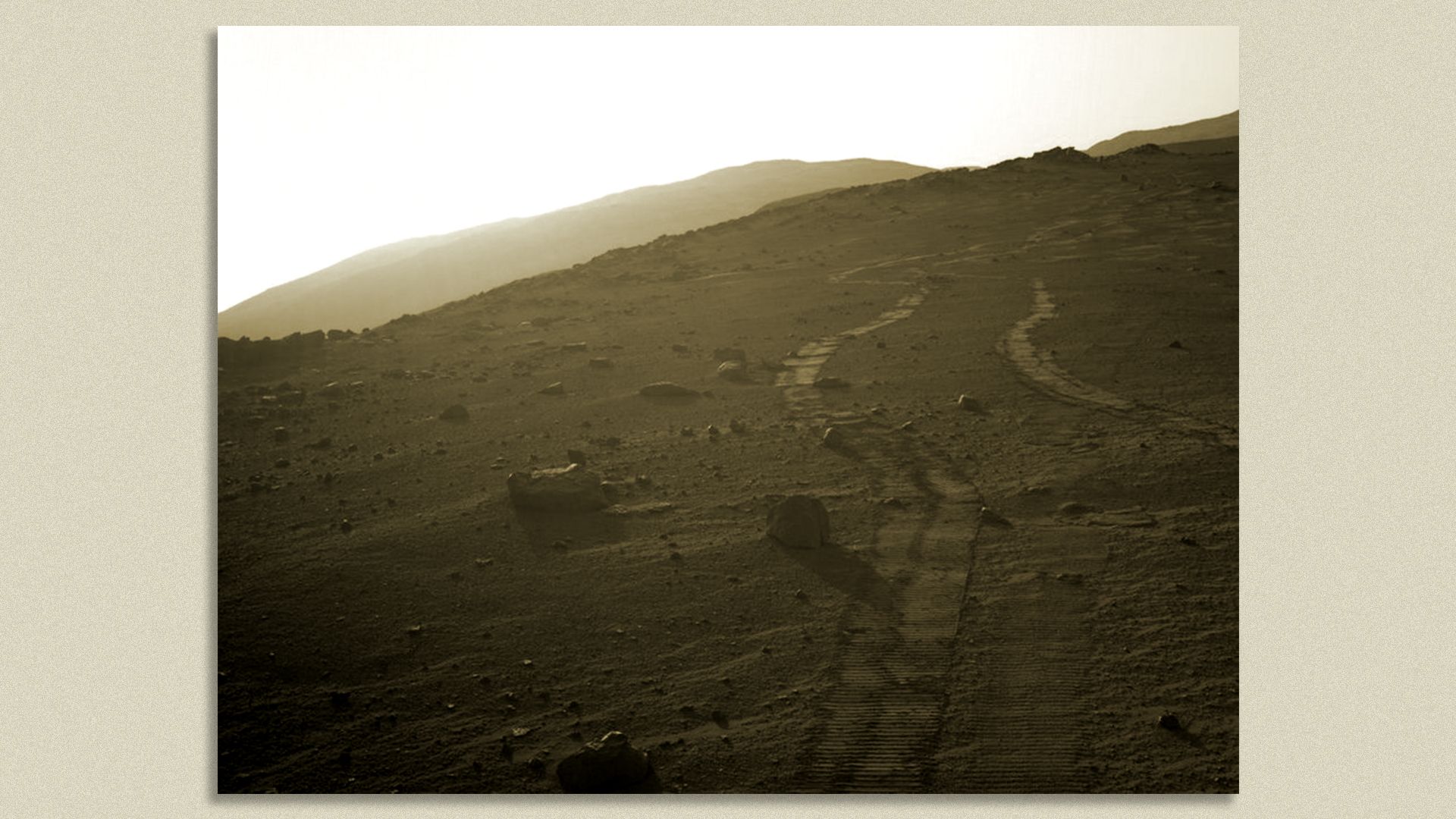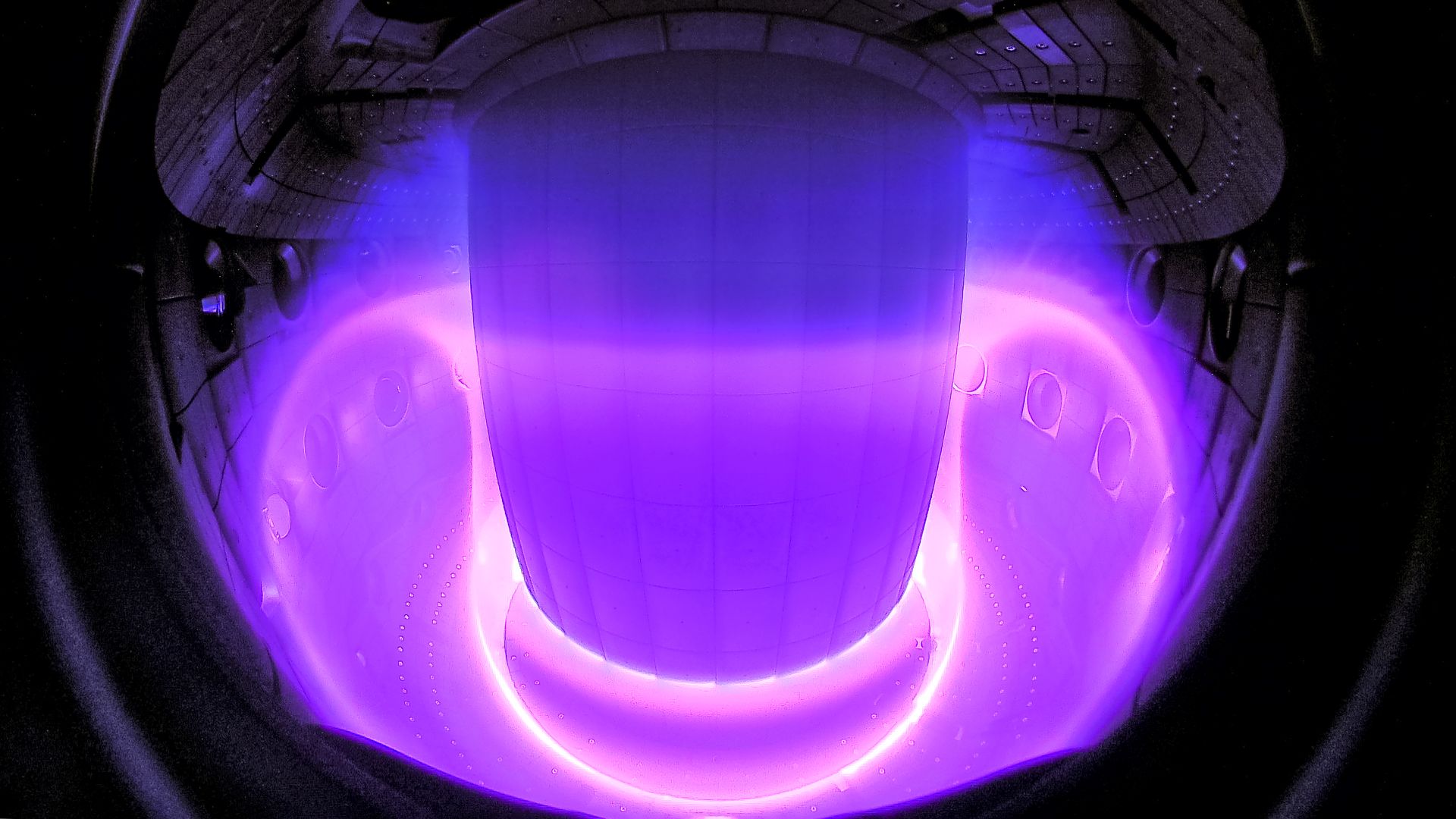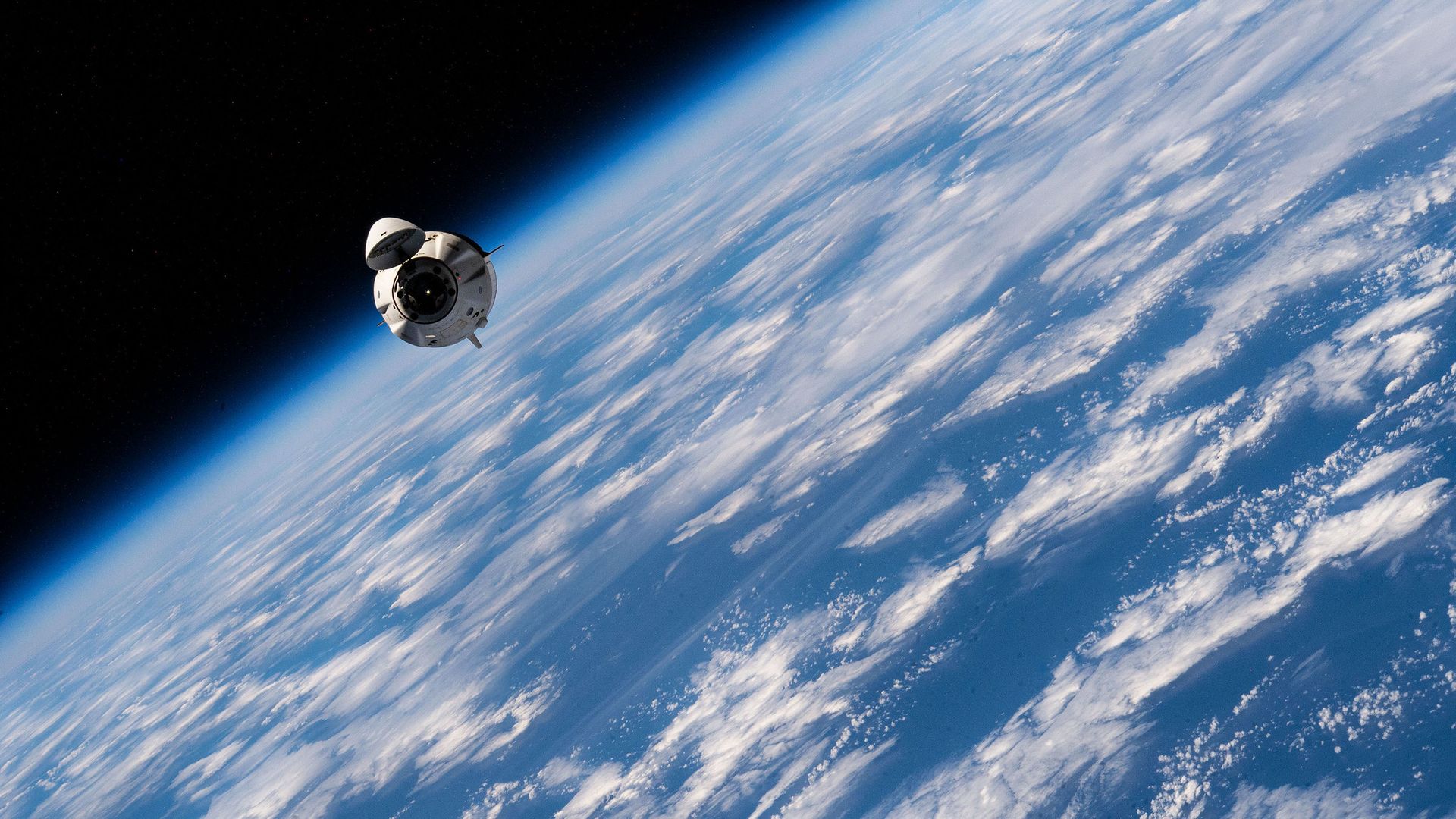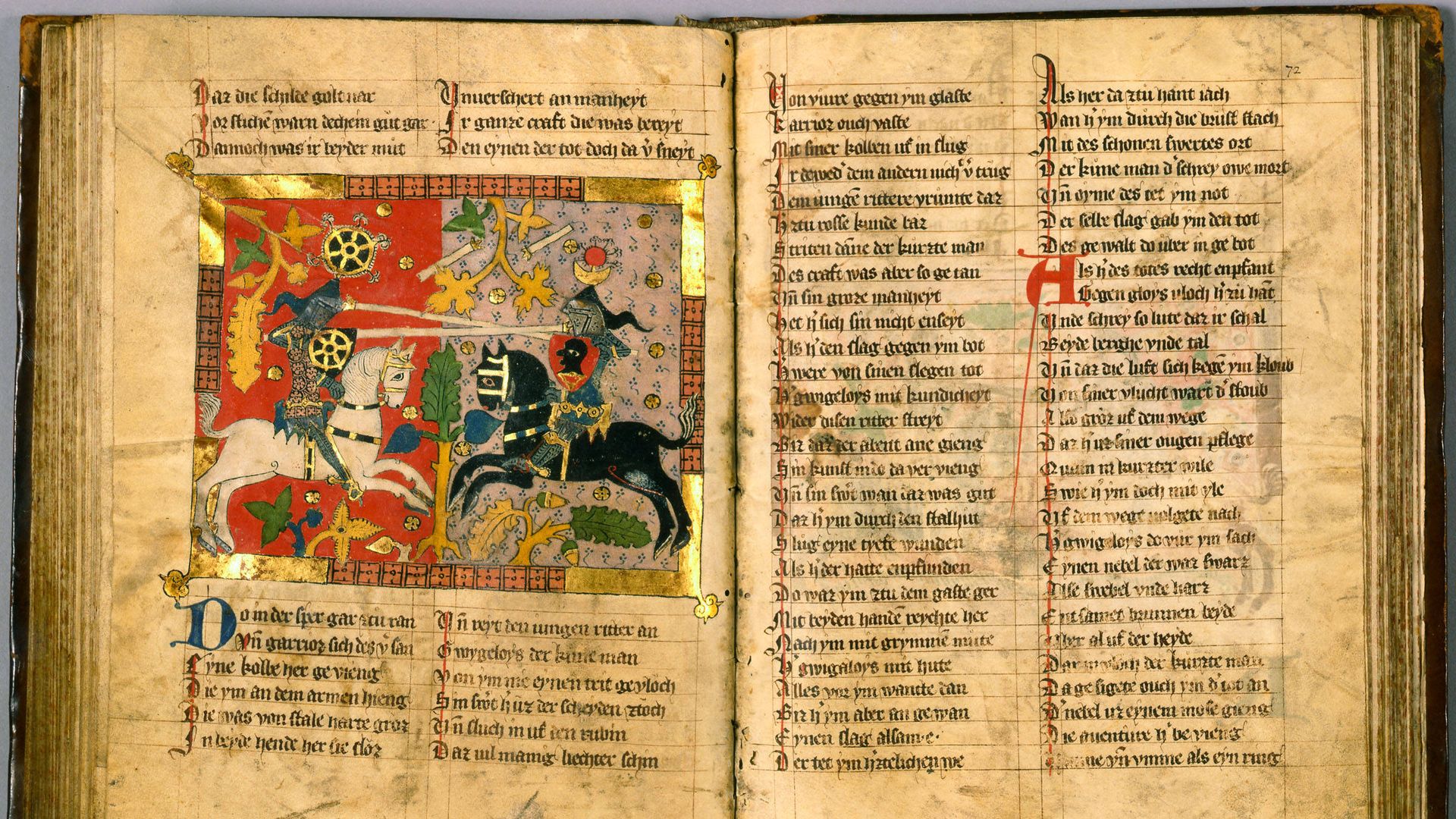| | | | | | | | | | | Axios Science | | By Alison Snyder ·Feb 17, 2022 | | This week's newsletter is 1,665 words, about a 6-minute read. - Send your feedback and ideas to me at alison@axios.com.
- Axios Science will be off next week and back in your inbox on March 3.
- Sign up here to receive this newsletter.
| | | | | | 1 big thing: Mars rover's main event |  | | | Perseverance's tracks on Mars. Photo: NASA/JPL | | | | After a year on Mars, NASA's Perseverance rover is preparing to set off on its longest trip yet on the surface of the Red Planet, driving stretches of the journey all by itself. The big picture: The mission to Mars, designed to search for evidence of ancient life on the planet and collect samples that could be brought back to Earth for the first time by a future mission, hints at how robots will help humans explore the solar system in the future. Catch up quick: Perseverance landed in Mars' Jezero Crater — once a lake fed by rivers — on Feb. 18, 2021. The site, later named to honor science fiction writer Octavia E. Butler, is about 1.5 miles from where the rover was supposed to land near a dry river delta that is the central focus of the mission. - For the past year, Perseverance explored its neighborhood, making surprising discoveries on the crater floor by happenstance.
- It spotted big boulders high up on the delta that scientists think were deposited there by large floods, suggesting the crater had filled up with water in multiple stages.
- The rover also sent data that to scientists' surprise indicate some of the rocks on the Jezero crater floor are igneous — those formed from lava. These types of rocks can be dated with accuracy and precision, so if returned to Earth in the future, they could give scientists "the first quantitative pin on the x-axis of Mars' history," says Kenneth Farley a geochemist at Caltech and project scientist for the mission.
What's next: Perseverance is about to head back to its landing site and on to the delta — its original destination where scientists think lake bottom muds formed sedimentary rocks that can hold their own secrets including signs of past life. How it works: The roughly 3.7 mile trip to the delta — more than twice the total miles traveled by Perseverance in the past year — is expected to take about three months, Farley says. That's about half the time it would have taken with earlier rovers. - A key advance from NASA's Curiosity rover that landed on Mars in 2012 is that Perseverance can navigate autonomously with a little help from human commanders on Earth who use satellite imagery to tell the rover to avoid large areas of deep sand and other major hazards.
- The rover collects images of its environment, processes them and moves all at the same time rather than in sequence with guidance from operators. Perseverance then can drive autonomously four to five times faster than Curiosity, says Michael McHenry of NASA's Jet Propulsion Laboratory who helped design Perseverance's navigational system called AutoNav.
The big picture: Robots have supported space exploration for decades but recent advances in autonomous driving and drones are opening new types of planetary exploration. - Ingenuity, the helicopter that accompanies Perseverance, is paving the way. A large drone, Dragonfly, is slated to fly over Saturn's moon Titan in search of signs of life and its origins.
Perseverance's autonomous ability "foreshadows the creation for later Mars expeditions of truly autonomous robots that will study the landscape and choose the best routes on their own," science writer Donald Goldsmith and astronomer Martin Rees write in their forthcoming book, "The End of Astronauts: Why Robots Are the Future of Exploration." Go deeper. |     | | | | | | 2. Catch up quick on COVID |  Data: N.Y. Times; Cartogram: Kavya Beheraj/Axios "COVID cases are plummeting across the U.S. ... but deaths remain stubbornly high," per Axios' Sam Baker and Kavya Beheraj. Reinfections with the coronavirus increased during the Omicron surge, reflecting the variant's ability to evade immune defenses mounted by previous infection or vaccination, Smriti Mallapaty reports for Nature. An influential model estimates "73% of Americans are, for now, immune to Omicron, the dominant variant, and that could rise to 80% by mid-March," Carla Johnson reports in the AP. Age is a major risk factor for death from COVID-19, Sarah Zhang writes in the Atlantic. Someone over age 65 is 65 times more likely to die from the disease than someone in their 20s. |     | | | | | | 3. AI controls the fuel for fusion energy |  | | | Plasma inside the TCV tokamak. Regions of different colors correspond to different temperatures of the hot plasma. The center of the plasma is so hot that it does not emit visible light. Photo: Curdin Wüthrich/SPC/EPFL | | | | Researchers have developed an algorithm to control the hot, chaotic plasma that fuels fusion energy reactors. Why it matters: The plasma in fusion reactors needs to be controlled to extract energy from the reactions. Fusion is a potential source of clean fuel that has long been promised — but not yet delivered. Background: The goal of nuclear fusion is to harness the energy released when two atomic nuclei of hydrogen are pushed together. - Experimental reactors are notching advances in creating energy, but to become useful as a commercial fuel source, reactors will have to generate more energy than is required to produce the reaction in the first place.
- One approach for creating and controlling plasma is to use powerful magnets in a donut-shaped reactor called a tokamak.
How it works: The tokamak at the Swiss Plasma Center at the EPFL is used to study the optimal conditions for confining constantly changing plasma. - The plasma's shape and distribution in the tokamak can be adjusted by changing the voltage in the 19 magnets that hold it in place.
- But testing new plasma configurations by changing the interconnected conditions in the tokamak requires significant engineering and design effort.
What they did: DeepMind researchers developed a deep reinforcement algorithm that learned to control the magnetic coils to yield — and maintain — different plasma configurations. - The algorithm takes in 90 observations about the plasma and adjusts the coils to produce different plasma shapes.
- They first trained the algorithm in a simulator then tested it in the tokamak at the Swiss Plasma Center.
- It was able to produce a range of shapes — conventional, elongated plasmas and advanced ones, including a snowflake configuration and an arrangement of two separate plasmas at the same time, the researchers reported in the journal Nature.
What's next: The results suggest there may be new ways to control the plasma, Anne White, a professor of nuclear science and engineering at MIT who was not involved in the research tells Axios in an email. - Those might include "how to optimize control of the plasma shape and heat load at the divertor (the main heat "exhaust pipe") dynamically during a tokamak pulse."
Go deeper. |     | | | | | | A message from Axios | | Sports news worthy of your time | | |  | | | | Get the latest sports headlines, stats, stories and trends delivered daily to your inbox with Axios Sports. Subscribe for free | | | | | | 4. Next private SpaceX flight will be on a science mission |  | | | SpaceX Crew Dragon spacecraft above Earth in 2021. Photo: SpaceX | | | | The next private SpaceX flight will conduct novel science experiments in space. Why it matters: The research may help answer key questions about how humans fare during long periods in space and how to protect them in a future where more people could spend more time off the Earth. - "We want to utilize every second possible to benefit our overall goal to advance space exploration and make it accessible for all," mission pilot Scott Poteet says.
Details: Polaris Dawn, the first of three planned flights, is scheduled to launch later this year, carry billionaire Jared Isaacman, who is helping finance the flights, and three other people to space. - In the planned five-day flight — which would go to the radiation intense region called the Van Allen belt and potentially to an orbit farther from Earth than any since the last lunar missions — the crew will collect data about the health effects of radiation, which increases the risk of cancer and other diseases.
- They also plan to test the laser-based communication system for SpaceX's Starlink satellites, which aim to provide internet access to countries without connectivity, for use in space communication systems for lunar and Martian missions.
- SpaceX's spacesuit designed to offer protection from radiation and other space elements will be tested during a spacewalk.
- The team is fielding an ever-growing list of proposed science experiments from other researchers. They'll be "prioritizing any experiments that have a direct benefit for human health on Earth and in space," Isaacman says.
Another experiment they are seeking approval for would study the effects of microgravity on pressure in the brain during long space flights. An increase in intracranial pressure can cause vision impairment, headaches and other effects seen in many astronauts. - Studying what's known as spaceflight associated neuro-ocular syndrome (SANS) could involve implanting a transducer in a crew member's brain that connects to a catheter in the spinal cord to measure fluid pressure before, during and after the mission.
|     | | | | | | 5. Worthy of your time | | This family carried a rare mutation that should have been lethal. What was keeping them alive? (Eric Boodman — STAT) A woman is cured of HIV using a novel treatment (Apoorva Mandavilli — NYT) Do birds have language? (Betsy Mason — Knowable) Fringe theories stack (Michael Gordin — Aeon) |     | | | | | | 6. Something wondrous |  | | | German manuscript containing the Arthurian romance of Wigalois. Photo: CC-BY University Library Leiden | | | | Fires, recycling pages for every day needs like wrapping meat or boxing goods, and other events and uses consumed more than one-third of medieval works about heroes and chivalry, researchers report today. Why it matters: Quantifying the lost recordings and expressions of culture helps researchers address a bias in data that can limit the understanding of earlier societies. How it works: The researchers used an "unseen species" model used by ecologists to estimate the original amount of medieval heroic and chivalric literature, including stories of King Arthur, Beowulf and Irish tales. - Literary works were treated as species and surviving copies of them as sightings of the species.
- They looked at 3,648 copies of 799 stories and found just 9% of manuscripts survived out of about 40,600 copies of 1,170 works.
The intrigue: Literature written in Icelandic and Irish was lost at lower rates than stories written in French. - 19% of documents in Irish and 23% in Icelandic survived compared to 62% in English, they report in the journal Science.
- The researchers suggest that may be because there were fewer social connections so the works were more evenly distributed among people on these islands, meaning overall they were less vulnerable to being destroyed by fire or other events.
"The sample of historic books, coins, paintings, etc. that survives is but a fraction of what once existed," Mike Kestemont of the University of Antwerp and an author of the paper said in a video about the research. - The researchers say the new technique could be applied to studying those items as well.
|     | | | | | | A message from Axios | | Sports news worthy of your time | | |  | | | | Get the latest sports headlines, stats, stories and trends delivered daily to your inbox with Axios Sports. Subscribe for free | | |  | Bring the strength of Smart Brevity® to your team — more effective communications, powered by Axios HQ. | | | | | | Axios thanks our partners for supporting our newsletters. If you're interested in advertising, learn more here.
Sponsorship has no influence on editorial content. Axios, 3100 Clarendon Blvd, Suite 1300, Arlington VA 22201 | | | You received this email because you signed up for newsletters from Axios.
Change your preferences or unsubscribe here. | | | Was this email forwarded to you?
Sign up now to get Axios in your inbox. | | | | Follow Axios on social media:    | | | | | |










No comments:
Post a Comment